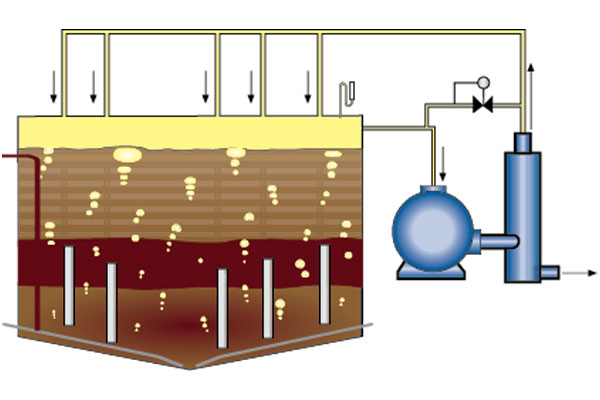Choose a different country or region to see the content specific to your location
Select Your Country/Region
Current Region:
 Global (EN)
Global (EN)
Choose a different country or region to see the content specific to your location
Current Region:
 Global (EN)
Global (EN)
How can we help you?
Anaerobic digestion is the natural process in which microorganisms break down organic materials. Organic refers to anything that comes from or is made of plants or animals. Anaerobic digestion happens in closed spaces where there is no air or oxygen. The following materials are considered organic: animal manure. food scraps, fats, oils, and greases, industrial organic residuals, and sewage sludge (biosolids).
Anaerobic digestion is a complex biochemical reaction carried out in many steps by several types of microorganisms that require little or no oxygen to live. During this process, a gas that is mainly composed of methane and carbon dioxide (CO2), also referred to as biogas, is produced. The amount of gas produced varies with the amount of organic waste fed to the digester and temperature influences the rate of decomposition and gas production.
Biogas is mostly methane (CH4) and carbon dioxide (CO2), with very small amounts of water vapor and other gases. The carbon dioxide and other gases can be removed, leaving only the methane. Methane is the primary component of natural gas. This gas is both hazardous and potentially useful. If methane were to vent into the atmosphere, it contributes to smog as a hazardous gas known as volatile organic compounds (VOC).
The material that is left after anaerobic digestion happens is called “digestate". Digestate is a wet mixture that is usually separated into a solid and a liquid. Digestate is rich in nutrients and can be used as fertilizer for crops.
Anaerobic digestion further digests the concentrated sludge after the aerobic process. In this process, sludge is converted to methane and carbon dioxide. An airtight reactor is used, and the process can take 30 to 60 days.
The key to this process is various groups of organisms that work together to break down the sludge. One group hydrolyzes organic polymers and lipids into monosaccharides and amino acids. A second group ferments the sludge to organic acids, mostly acetic acid. A third group breaks down the hydrogen and acetic acid that has formed into methane gas and carbon dioxide.

Multistage centrifugal blowers are used to move the gas from the digester to further treatment processes necessary for the application. These systems can be used to boost the gas to a compressor for storage, directly to a flare or to a boiler.
A typical wastewater treatment plant using the anaerobic process produces large quantities of methane gas. Methane gas is used to operate dual-fuel engines and to create electricity and heat for buildings. Hot water from the engine jackets and heating boilers may be used for sludge heating. This gas is generally 65% to 70% methane and 25% to 30% carbon dioxide, and it produces roughly 600 BTU/ft3. Analyzing the gas will determine when the process is complete. A compressor is used to store the gas and unused gas is flared.
Equipment is tested before reaching the customer or end-user. Thus, ensuring top quality and avoids unforeseeable issues or operational downtime. Therefore, upholding Hoffman & Lamson’s strong reputation as the global leader of engineered solutions and producing premier quality products efficiently and economically. There are over 100,000 HOFFMAN & LAMSON multistage centrifugal blowers and exhausters in operation worldwide.
ABOUT Hoffman™ and Lamson™
Hoffman™ and Lamson™ brands of centrifugal blowers and exhausters are among the many compressed air and gas technologies manufactured by Gardner Denver Inc.
Part of the Nash Division, they are American originals. Hoffman™ and Lamson™ brands have been setting industry standards for excellence, reliability, and customer satisfaction for over 100 years. Lamson, established in 1880, and Hoffman, in 1905, are brands customers know and continue to trust.